General Info
While magic and technology (to varying extents) have each been part of Waywardia for years now, combining the two is a relatively recent and unexplored realm. No society can claim to have mastered utilizing magic, as for every invention that results in a success, there are dozens (if not hundreds) of failed attempts.
When not combining the two, technology exists in a general steampunk style state - think anywhere from late 1800s-1920s. A lot is being invented but still remains in early stages, making it uncommon and significantly pricey. As for magic, it exists most often in wild and raw forms - utilized only by nature and magical creatures. No one cat can use magic with their own paws.
MAGIC
General
Magic has long been a part of this world. It is found mostly in natural forms, such as magic forests or other stationary environments, spontaneous magic "storms," or flowing through plants or creatures borne of different types of magic. It is wild and raw, and little is known about how to control it.
Magic creatures are the only living beings who know how to use magic with their own paws/hooves/claws/etc. Catfolk do not have the ability to use magic without the help of a magical tool, nor do they have the ability to imbue themselves with magic.
If you at any point have questions about magic in the world or working it into your character’s society, please ask, and we’ll be happy to help!
Natural Magic
Natural magic is far and above the most common kind of magic you’ll encounter in Waywardia. It can range from vast and uncontrollable locations or storms to small and harmless patches of magic. Cats have no way to take this magic for their own, and can only try to utilize it in ways that work with how the magic already exists.
Natural magic can also be found running through magical plants or creatures. These organisms are born with magic, and it is part of them. They usually have a set method of using their magic and don’t experiment too much, acting off instinct and what kind of magic runs through them.
EXAMPLES OF NATURAL MAGIC
✦ A lake with mild healing properties if you’re submerged in its waters long enough
✧ A unicorn with certain magical capabilities
✦ A sudden storm that ends with a small sprout shooting up wherever a raindrop landed
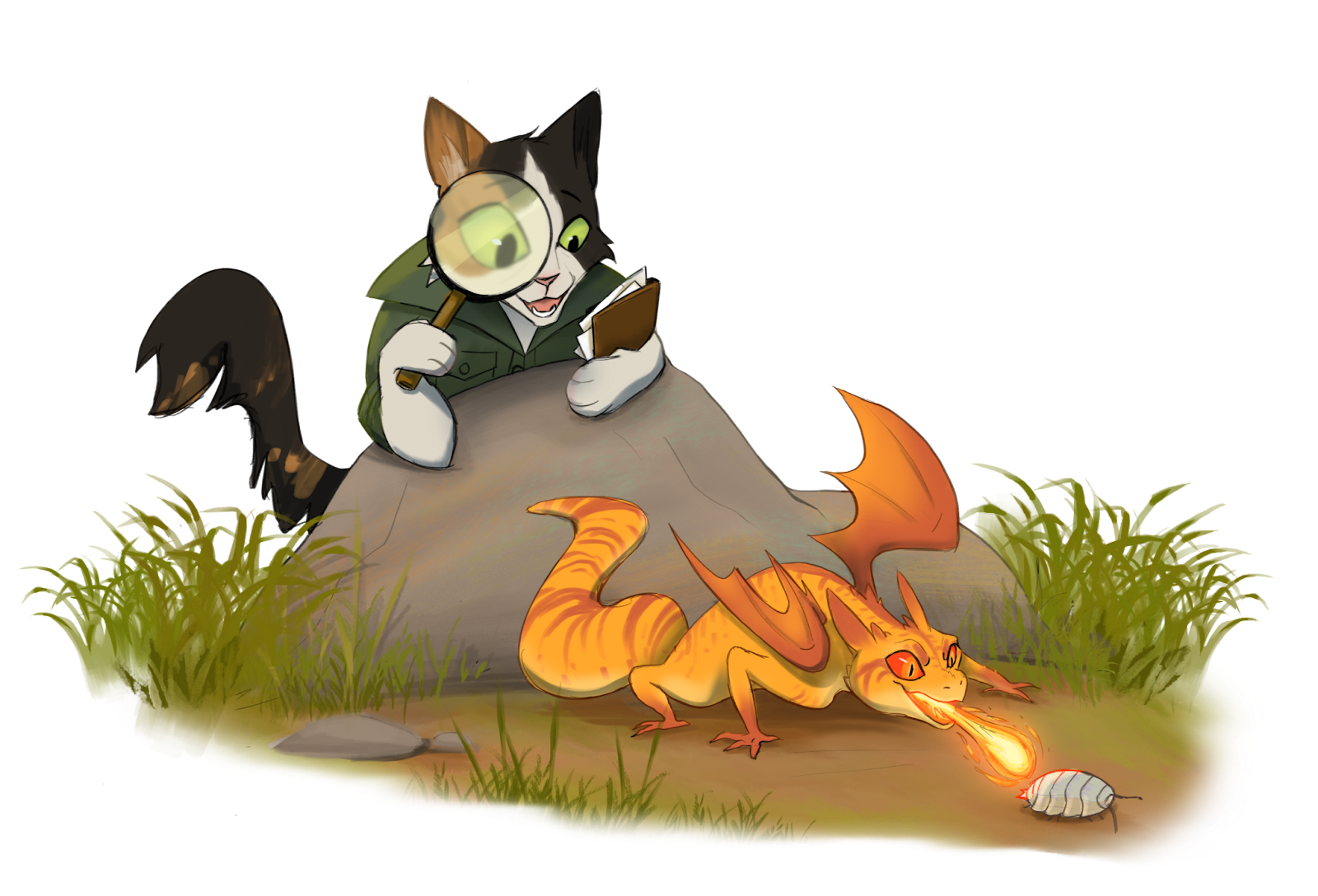
Magical Technology Origin
Many methods have been developed to incorporate magic into gadgets to make them function. The first instance of this by the scientist was by using a crystalline material called Laurelstone, which was embedded into the invention and connected with magic-receptive wires in a way that acted much like a battery.
Using Laurelstone is the most common and simple method for magic technology, eventually able to be tailored into different materials such as string sewn to enchant clothing, or a refined gemstone to strengthen a sword. However, even these crystals can be fickle to their intended purposes. It may be difficult to find the right one that reacts correctly to the item intended to be enchanted, but with the efforts of large-scale corporations, shops that provide the right materials for the right enchantments have become more available to those with enough money.
You may use this method, or make up your own when incorporating explanations to magical objects in your characters’ history. We just ask you follow the guidelines and lore provided for you, and if anything is uncertain, you are always open to ask for approval!
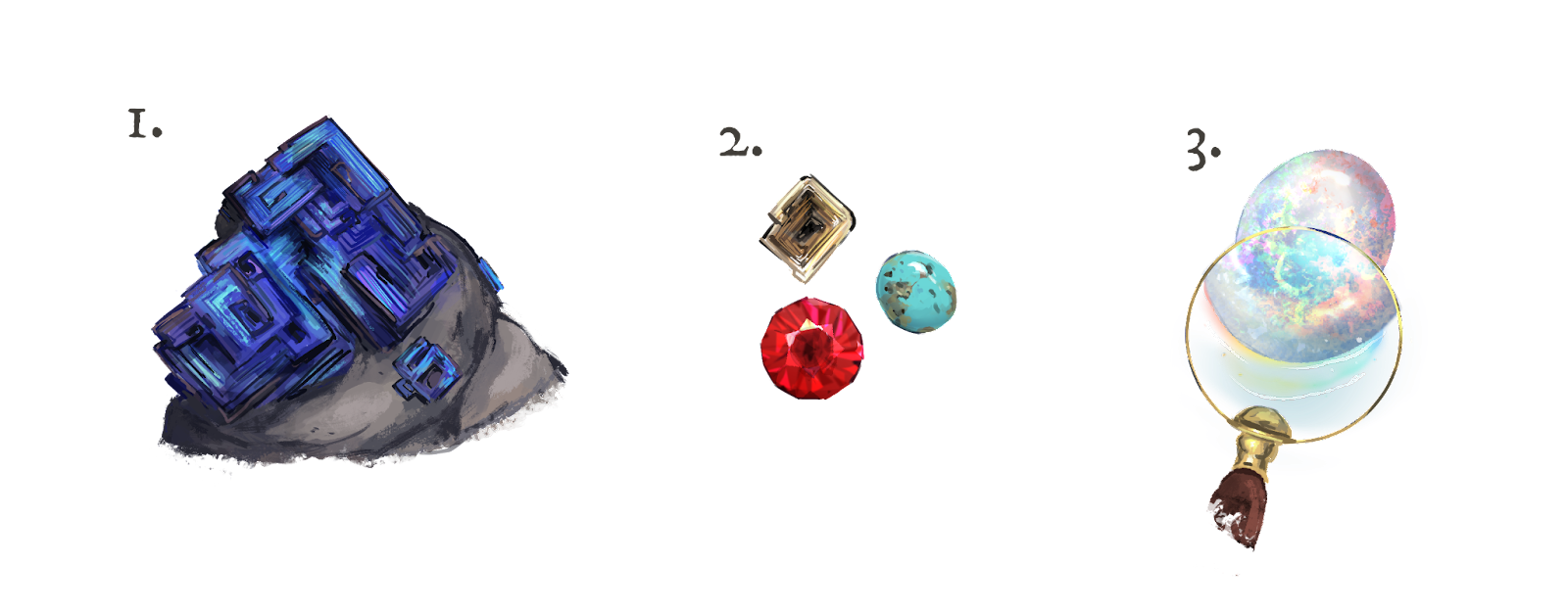
- A Laurelstone in its rawest form. Named as such as it’s considered to be “Waywardia’s greatest achievement". Can appear in any color that mimics other precious minerals, but grows in a geometrical pattern similar to bismuth.
- For ages, Laurelstone was assumed to be other minerals that were magically affected to grow like bismuth. It is possible for catfolk to be in possession of one without knowing its true nature. Before discovery, many had refined and used the material much like other gemstones. Laurelstone may still be fashioned into gemstones for aesthetic purposes.
- With development of Magic technology, devices have been invented to discern mundane minerals from Laurelstone. Eg. A magnifying glass that reveals a magical aura emanating from the Laurelstone.
Magical Items
Magical items and item-creating are some of the newest ways catfolk have been trying to utilize magic. Research is minimal and ongoing, and so far, there have been no strict rules that seem to work across the board, other than the known fact that using Laurelstone is by and far the main cause of any success.
On that topic, when creating a magical item, there is no guarantee of success–it’s often more likely the item will fail, by either rejecting the magic or accepting the magic only to behave in a way that was not the desired intention. For example, trying to imbue a staff with fire magic to create a torch that never dies may instead result in a staff that wildly flings out small fireballs with no warning, or perhaps the staff ends up a small pile of magicless ashes should the experiment fail altogether.
Magical items tend to have more success when it’s a smaller object being imbued, or with a simpler intention. Larger objects require larger amounts of magic, which are almost always failures (sometimes dangerous ones). The more complex you try to get with magic, the easier it is to backfire or completely reject what you’re trying to do.
When adding magical items into your backstory, we just ask you to keep in mind that the bigger, stronger, or more complex it is, the rarer the item will be! Anything overly complex might need to be changed. In general, the practice of combining magic with cat-made objects is so new that there are more failures than successes, and most successes are smaller or simpler. Some magic items may be successful at first, but fade over time. Some may be successful, but not in the way you intend. Many, many more will fail, either in a disappointing or perhaps dangerous way. Feel free to play around with any of these outcomes within reason, and feel free to get creative with the technical process behind actually attempting to imbue magic into an object–experiments are still ongoing, and there is no one set method!
EXAMPLES OF MAGICAL ITEMS/SUCCESSES AND FAILURES
✦ A magical object is a success if it ends up with magic working according to the way it was intended! For example, trying to imbue a necklace with light magic to make it glow is a success if it does exactly that, with no other qualities.
✧ A magical object may fail by not taking to the magic at all. For example, trying to create a slingshot that sets its ammo on fire as it shoots out may not change at all, and you’re left with a normal slingshot in your hands.
✦ A magical object may also fail by taking to the magic, but in ways that are unexpected or uncontrollable. These account for many of the most dangerous failures. For example, trying to create a torch with a flame that never goes out, but instead you create a flamethrower object that spouts flame at random, making it dangerous and impossible to contain easily.
✧ When in doubt, please ask us if your idea for a magic item works!
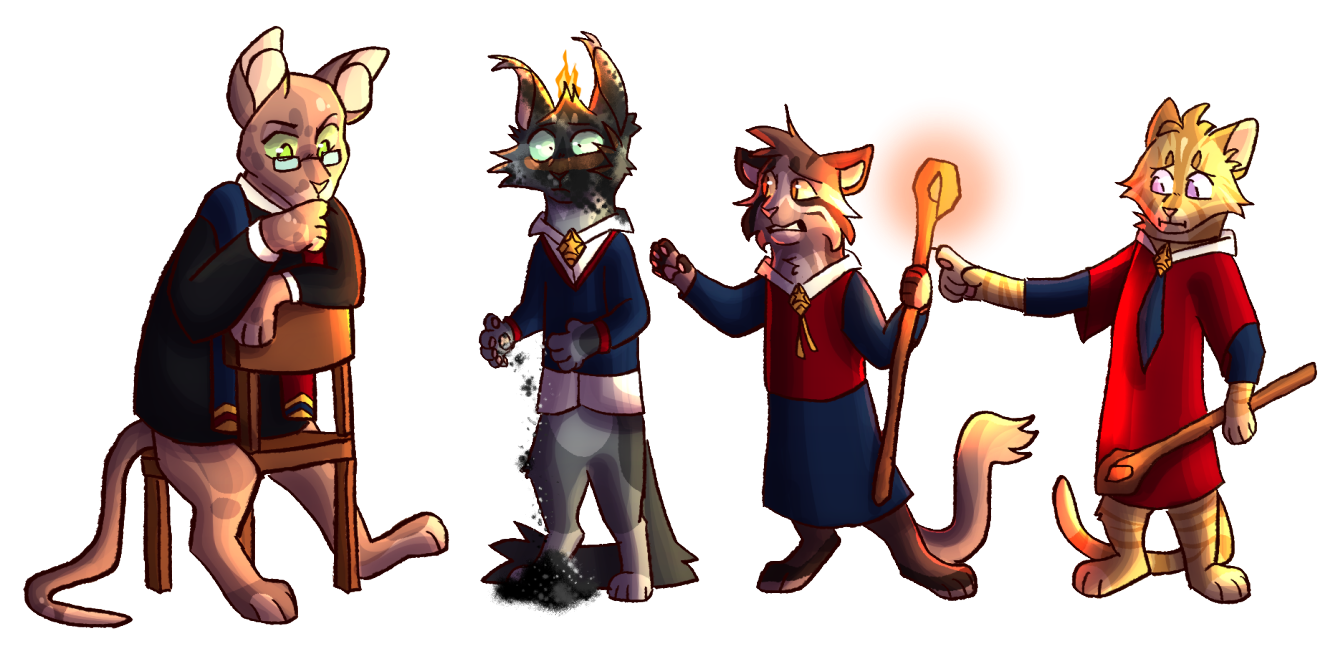
Curses
Curses don’t work in the way you may be used to them–as in, a dark magic user placing a curse on others with their own spells. Since cats don’t control magic, curses aren’t something you can place on each other. The only way to get a “magic curse" to affect your character is to have a magical creature curse them with their magic, or perhaps a magical item mishap (“experiment gone wrong" type deal).
Curses also cannot affect anything other than cosmetic appearances on your character or something non-cosmetic that will only affect your character and nothing else, purely for moderation purposes. For example, your cat cannot be cursed to have bad luck, as that would affect things like rolls and checks during roleplay, but they can be cursed to drop everything they pick up the first time– something that can be seen as unlucky, but you would moderate it yourself as it won’t affect rolls. Another non-cosmetic example would be that your cat can’t be cursed to radiate heat, as that could affect other characters, but your cat could be cursed to constantly feel warm or hot. Cosmetic examples may be your character cursed to turn shaggier once a month, or random flecks of color that appear on your character’s pelt, or your character gets cursed to have bald patches. Things of that sort!
Curses should also abide by our Character Creation rules, and any abnormal appearance changes should cover no more than 20% of the body. For example, a cat cursed to have their fur grow at a rapid length making them look like a giant fuzzball is totally fine to have at more than 20% since it’s just their normal fur that’s now longer–but turning a cat totally bright pink isn’t, since the cat wouldn’t be pink to begin with!
That being said, same with magic items, curses are not common! Since curses are not placed with spells, there is likely no way to “break" a curse for many of them, or no way that we will encounter during the roleplay. If you want to make it so that killing the magical creature that cursed you would break the curse, totally fine! Just be prepared to deal with the curse for the entirety of the roleplay, as we likely won’t run into that specific magical creature along the way. Many curses may never be able to be broken. You’re also welcome to play with the idea that your character believes they’re cursed when they really aren’t.
EXAMPLES OF CURSES
✦ A plant which when picked, causes part of the victim’s fur to turn into leaves.
✧ A magical item backfires and causes small stripes of discoloration up your character’s arms
✦ A dragon believes you stole from it and curses your character to get sick any time they touch pure gold
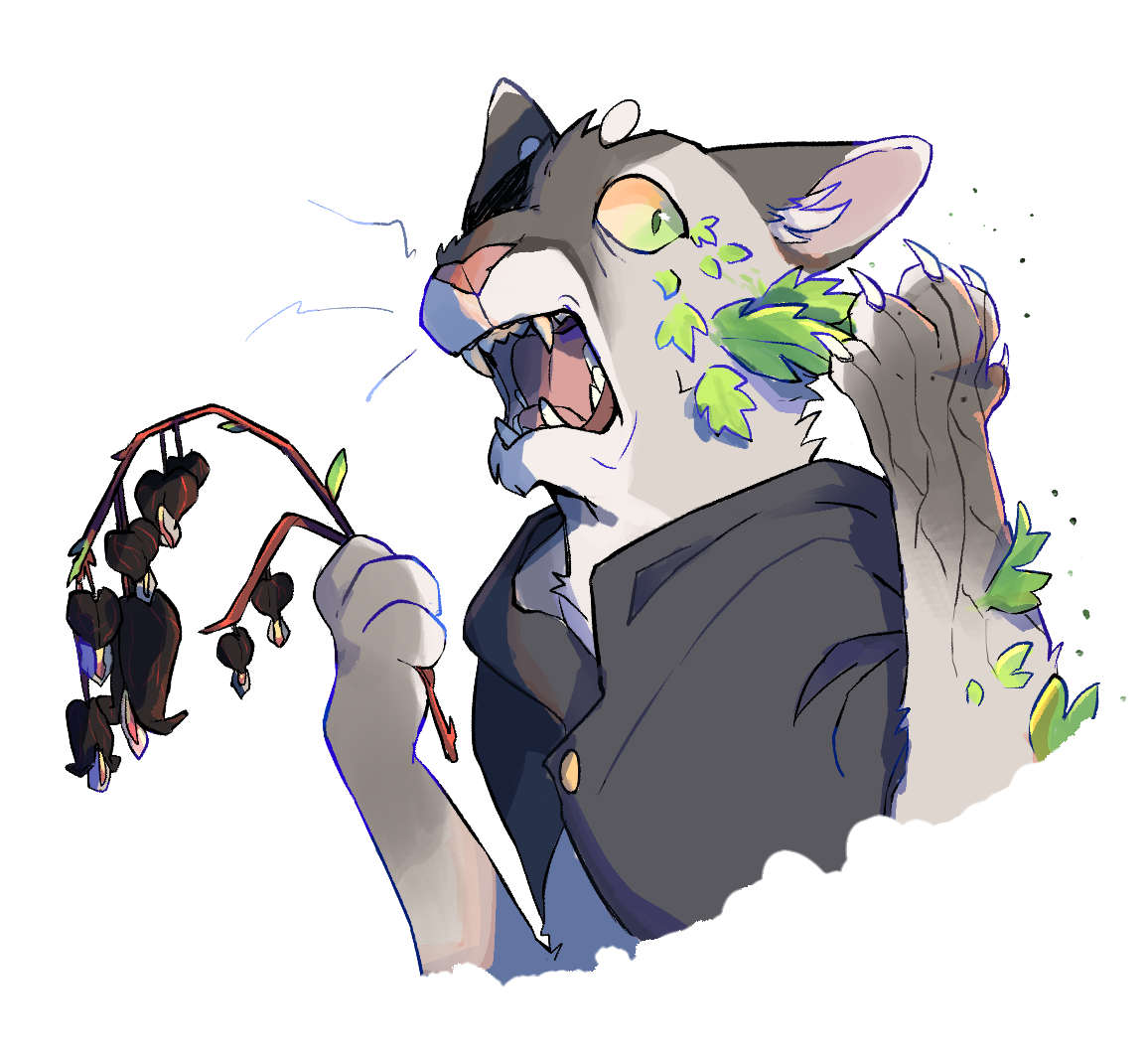
Magic Healing Items
Magical healing items are uncommon, as the nature of magical items is so unruly that it’s safer and makes more sense to rely on known and tested medicine and medical practices. However, minor medical-related magical items may be found at times, such as simple things like an ice pack that never melts or a bandage that speeds up healing when applied to a scrape or scar.
Boundless
As of late, magical items (even the successes) have occasionally been seen to go haywire. Often, although not all the time, these incidents are shortly followed by an appearance of a Boundless (please see our Boundless doc for more info). While no one yet understand why this is, a common theory is that the magic in the items acts as a warning for the Boundless, and as such, some villages and towns have started keeping a small, often unassuming magical object at the town gate in the hopes that it will act as a Boundless alarm system.
Rules for Magic and Character Use
Many of these rules have been talked about in each specific sub-section, but we’d like to reiterate them in one spot for you for easy reference, so hopefully you’re able to keep it all in mind for character creation!
✦ No magical items will be allowed on expeditions for the sake of us moderating. We can’t factor in every item and don’t want to give an unfair advantage to any one character. Your character may bring a magical item with them to use during rest breaks for fun, but they will be required to leave it behind before setting off on an expedition. You must keep it mind it needs to be something they could reasonably bring, as they must be able to travel with it!
✧ Curses are rare, but if you choose to utilize one for your character, it must be something that’s either purely cosmetic or something that will affect your character only. No luck-related curses or anything that may need to be accounted for rolls or checks. Nothing that may put other characters at a disadvantage solely for being around your character. Curses also shouldn’t be something positive that would give your character an advantage, although you’re free to have your character figure out a way to utilize a curse positively in a “make the most of the situation" sense!
✦ If you do choose to bring in a cursed character, please keep in mind we will not be providing special story opportunities for your character to break the curse in-story. We can work with you to try and figure something out, or you can make your character figure it out on their own, but the main story is for everyone and won’t reflect special opportunities for specific characters over others.
TECHNOLOGY
General
The level of technology in Waywardia is akin to the steampunk genre, meaning it has inventions similar to the 19th century. Things like locomotives, cars, cameras, and even revolvers are present, but are uncommon and far from advanced, especially since many of them require magic technology to function. Due to the expense of these objects, they are mostly used by the rich (which is why things such as daggers and axes are still the most common weapons, for example). Generally, locations should stick to this level of technology. While some places may be more inventive, bear in mind that advancements in technology are rare and expensive. World-altering inventions should not be present in your location (for example, Petunia’s location cannot invent airplanes).
A lot has been created but exists in older-fashioned forms, a lot is currently being experimented on and worked with, and a lot has not yet been created at all. Certain cities may be higher-tech than little towns and villages, and you’re welcome to play around within reason!
Transportation
Horses and other mounts are still often the go-to for transportation (please read our guide about Mounts and Pets before writing other species in as mounts). For larger scale transportation, Waywardian folk rely on boats and trains as well. Cars exist in a very early form, and are very expensive to buy and maintain.
Airplanes do not yet exist, but are likely being worked on–no plane has yet flown, though. Things like hot air balloons and blimps do exist.
Electronics
Waywardia does have electricity in its major cities (from sources like steam, wind, etc.) but a lot of electronics are still lagging. Things like cameras, video cameras, and the like are still in very early forms, and there is no such thing as computers or wi-fi or cell phones. Cats must rely on their trusty maps and compasses to guide themselves. TV exists in a very early form, and again is very expensive. Radio and books are the most common forms of story-telling entertainment.
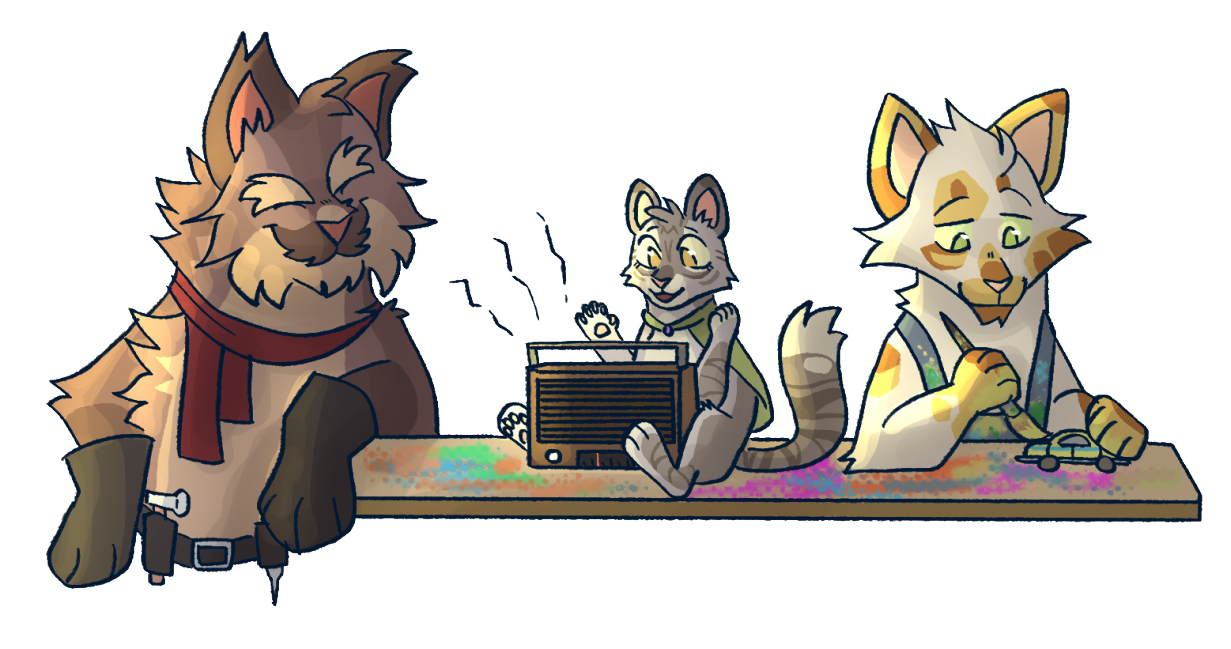
Medicine
Knowledge of medicine and other medical related issues are likely around the understanding of the mid 19th century (for example, they know bacteria exists but don’t quite understand the differences or details about it all, they know the need to keep clean, they know about infection, and so on) and the medical equipment itself is similar to the same 19th century type inventions. This is one field constantly being studied and improved, but a lot of their practices rely on the equipment they physically have, and medicine is definitely not overly advanced.
Education
Catfolk all over are doing their best to study and improve almost every category listed above! You’re welcome to have your cat study any of it, or perhaps have a job as a scientist working to create new inventions, as long as you don’t claim your cat has suddenly discovered something world-altering. Education also exists in other forms–literature, entertainment, art, math, so on and so forth–and would reflect the same general time period (with some artistic liberty allowed).